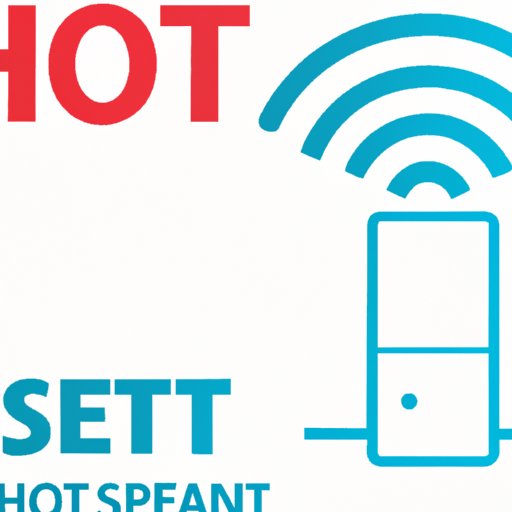
An Overview of How Hotspots Work
A hotspot is a physical location where wireless internet access is available to the public or to those who have the proper credentials. Hotspots can be found in coffee shops, libraries, airports, hotels, restaurants, and other public places. They are becoming increasingly popular as more people rely on their devices for entertainment, communication, and work.
Definition of a Hotspot
A hotspot is a physical location that has been set up with a wireless router or access point that enables users to connect to the internet. This connection is usually provided by an internet service provider (ISP) or through a network of computers. Hotspots allow users to access the internet from any device that supports Wi-Fi, such as laptops, tablets, and smartphones.
How Hotspots Connect Devices to the Internet
Hotspots use radio waves to transmit data between a router and a device. The router receives the data from the ISP and then sends it out via radio waves. When a device is within range of the router, it can pick up these waves and establish a connection with the router. Once a connection is established, the device can access the internet.

Explaining the Technology Behind Hotspots
In order to understand how hotspots work, it is important to understand the components that make up a hotspot. These components include hardware, software, and networking equipment.

Hardware Components of a Hotspot
The hardware components of a hotspot include the router, antenna, and modem. The router is responsible for sending and receiving data from the ISP. The antenna is used to broadcast the signal from the router and the modem connects the router to the ISP. All of these components must be properly configured in order for the hotspot to function properly.
Software Components of a Hotspot
The software components of a hotspot include the operating system, applications, and firmware. The operating system is responsible for managing the hardware and software components of the hotspot. Applications are installed on the device in order to access the internet. Firmware is responsible for providing the necessary instructions for the router to function properly.
How to Set Up a Hotspot
Setting up a hotspot is relatively easy and can be done in a few simple steps. First, you will need to prepare your device for a hotspot. This includes making sure that your device is compatible with the router and that the necessary software and drivers are installed. Next, you will need to choose a hotspot network. This can be a public hotspot or a private one. Finally, you will need to connect your device to the hotspot network.
Different Types of Hotspots
There are three main types of hotspots: public, private, and mobile. Public hotspots are typically found in public places such as coffee shops, airports, and libraries. Private hotspots are typically found in homes and businesses. Mobile hotspots are typically found in cars, boats, and other vehicles.

The Benefits of Using a Hotspot
Using a hotspot has many benefits. One benefit is increased mobility and connectivity. With a hotspot, you can access the internet from anywhere that has a signal. This allows you to stay connected even when you’re away from home or the office. Another benefit is improved productivity. With a hotspot, you can work from anywhere without having to worry about finding a reliable internet connection. Finally, using a hotspot can save you money since you don’t have to pay for expensive Wi-Fi services.
Potential Security Issues with Hotspots
While there are many benefits to using a hotspot, there are also potential security risks. Unsecured networks can be easily accessed by hackers, allowing them to gain access to your personal information. Man-in-the-middle attacks can occur when someone intercepts your connection and steals your data. Malware and spyware are also a concern, as they can be used to steal your data or infect your device with malicious software.
Overall, hotspots provide a convenient way to access the internet from almost anywhere. Understanding how hotspots work, the different types available, and the potential security risks can help you make the most of this technology.
(Note: Is this article not meeting your expectations? Do you have knowledge or insights to share? Unlock new opportunities and expand your reach by joining our authors team. Click Registration to join us and share your expertise with our readers.)
